#can the anti-abortion movement leave black women alone? for once?
Explore tagged Tumblr posts
Text
Daily reminder that the anti-abortion position will never be a feminist, left-wing or progressive position, and the pathological need of pro-lifers to tokenize minorities and certain experiences that we have needs to be studied.
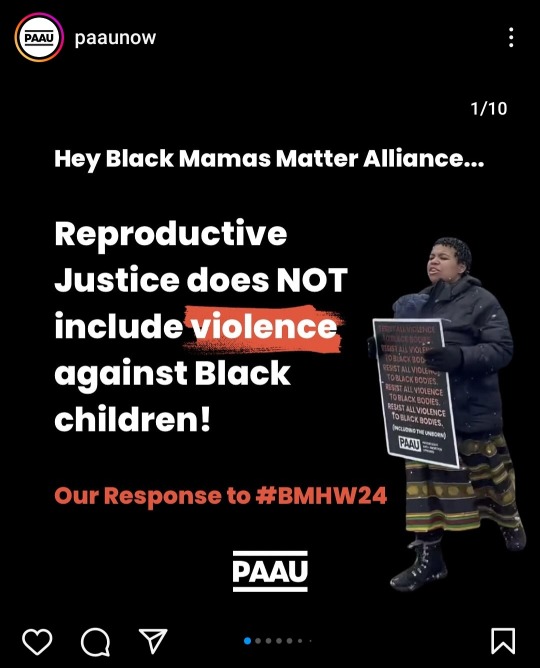
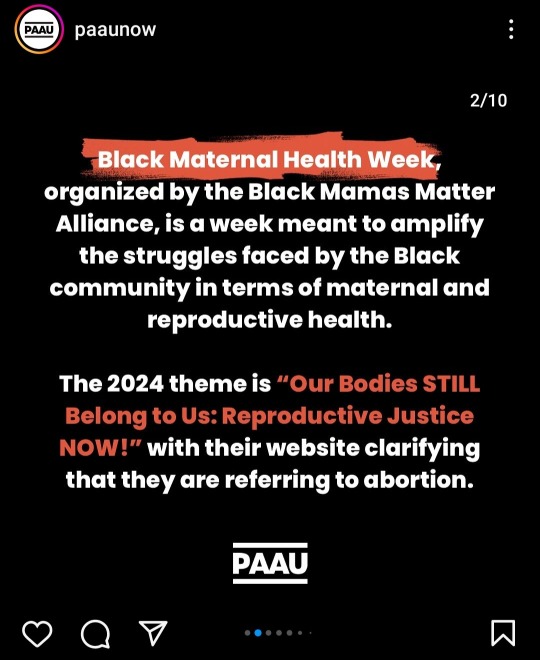
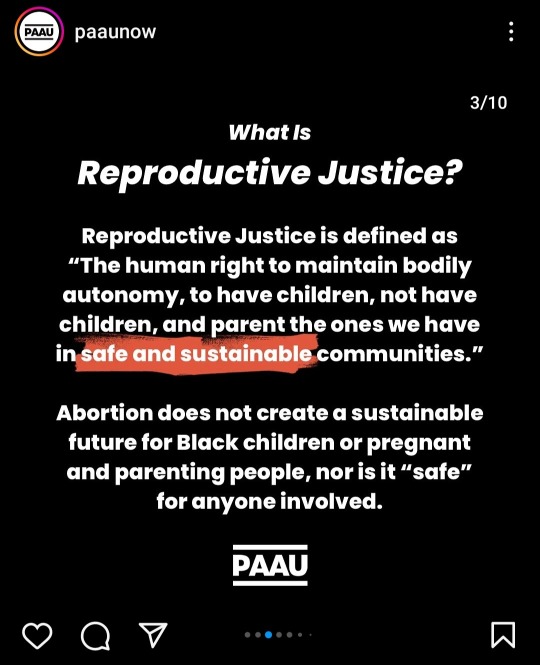
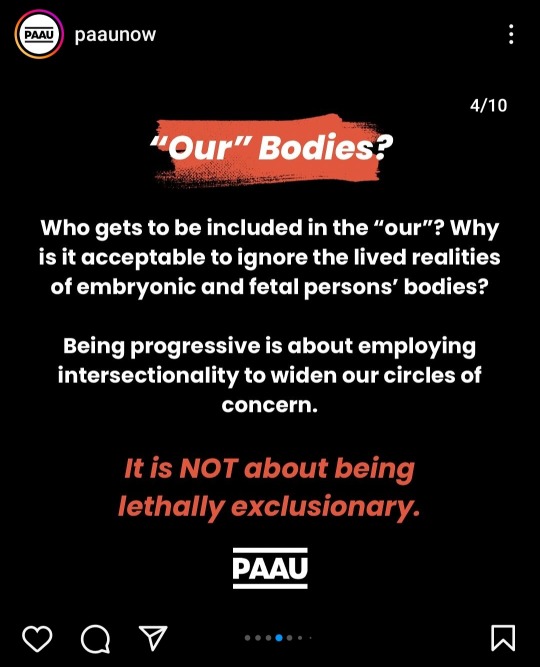




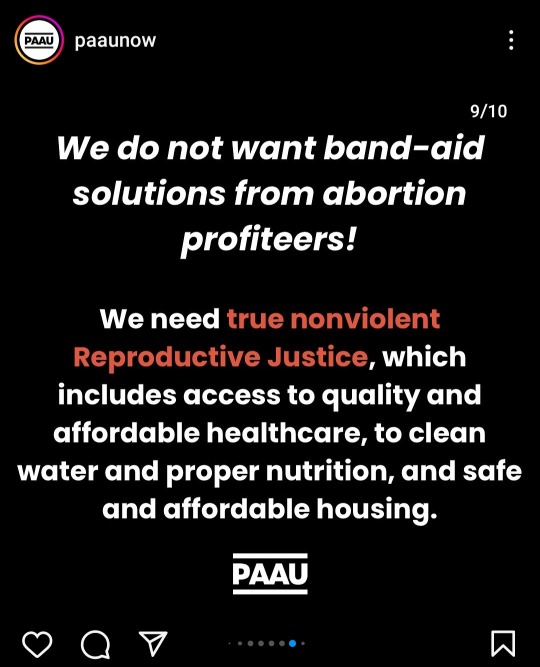
First off, I find it very funny that an organization known for having its white members engage in physical violence, trespassing and digging in the trash for fetal remains is now trying to lecture black women about intersectionality with regard to pregnancy and childbirth.
Reproductive justice is both a term and an ideology that black women specifically came up with in order to acknowledge how race and economic class play a role in reproductive access and decisions. The fact that an organization run and represented by white people pretending to be progressive is trying to check the women who came up with an actual progressive framework of beliefs to better represent their own interests is hilarious to me.
Second, PAAU is not a progressive organization. Its founder, Terrisa Bukovinac, is on the board of the Leadership Institute, a politically conservative training organization, and has gone to events hosted by the Heritage Foundation - a right-wing conservative think tank helping to drive anti-abortion legislation around the country by supporting conservative Republican politicians in various ways.
You even have members of this organization like @secularprolifeconspectus on Tumblr who will do interviews with people like Sebastian Gorka, who has had ties to the Order of Vitéz - a Hungarian order of merit which allied itself with Nazis during WWII.
(BTW, the IRONY of spending time talking about how Planned Parenthood is rooted in eugenics while talking about how conservatives are so much nicer than leftists to someone who has ties to a Nazi-sympathizing organization. Ma'am... 😬)
Then again, @secularprolifeconspectus also likes to spread lies like Abortion Pill Reversal™️, which isn't real, and repeats quotes from Abby Johnson, the famous anti-abortion activist who had two abortions and said that the police would be smart to racially profile her black sons in the wake of the Black Lives Matter Protests of 2020 following George Floyd's murder. 🙃
@secularprolifeconspectus has me blocked, but I'll just say this.
The irony of pretending to care about the interests of black people while rubbing shoulders with far-right political figures and reposting words from racist white women but also being confused as to why leftists don't like you is very telling.
Third, the information posted is wrong. It's very convenient that PAAU is "worried" about maternal morality in the DMV area when the U.S. states with the highest maternal mortality rates are Mississippi, Louisiana, Georgia, Alabama and North Carolina (CDC, 2023) - states with higher concentrations of black people that are also dominated by white, conservative political leadership which puts anti-abortion legislation in place. The DMV area is actually lower in comparison to these places, yet PAAU conveniently ignores that im order to paint a false narrative.
Source: Which states have the highest maternal mortality rates?, USA FACTS

Fourth, I also find it very funny that "progressive" pro-lifers have the audacity to accuse organizations run by minorities of hijacking progressive principles when that's all pro-lifers do by...
Using terms like "Abortion Industrial Complex" after anti-war advocates have been discussing the Military Industrial Complex for years
Acknowledging how finances and money plays a role in people choosing to get abortions but only every criticizing pro-choicers for supporting abortion access (*and conveniently never holding the very conservative anti-abortion movement accountable for the policy-making role they play in making people not want to have children in the first place)
Saying that abortion access is a part of Big Pharma, when forcing women to have children they don't want literally creates another patient pool for Big Pharma to subsist off of
Arguing that affordable healthcare, housing and clean water and nutrition - things that pro-choice activists have spent years advocated for (*and that conservative pro-lifers have spent years voting against), somehow cannot co-exist with abortion access
So yeah, removing abortion access from people who want it will never be progressive, and the fact that pro-lifers still try to tokenize minorities (and chastise us when we don't support their worldview) shows how little they actually care about those of us people of color.
8 notes
·
View notes
Photo

It is hard to be a part of movement, which has so many flaws. The feminist movements in theory is excellent; however, within The Combahee River Collective we are once again faced with more problems within the feminist movement and forced to acknowledge why there have been so many fractures within this movement. Due to the lack of African American representation within the movement it is thought that African American women were not a large part of the movement. This thought process is inherently wrong because “there have always been Black women activists—some known, like Sojourner Truth, Harriet Tubman, Frances E. W. Harper, Ida B. Wells Barnett, and Mary Church Terrell, and thousands upon thousands unknown—"(The Combahee River Collective 2). They have been there from the start but those within the movement and opposing the movement have prevented them from being seen. Their stories were not the stories being told in Ms. Magazine and their faces were not on the cover because that would have been too radical for the time according to the middle, age white feminist. The white feminist movement was laced with racism which is why African American women formed the National Black Feminist Organization (NBFO). These women were torn between two major fights and neither the fight for anti-racism, nor the fight for anti-sexism could fully represent these women. Due to their lack of representation in both fights they created their own politics to state: “we are actively committed to struggling against racial, sexual, heterosexual, and class oppression, and see as our particular task the development of integrated analysis and practice based upon the fact that the major systems of oppression are interlocking. The synthesis of these oppressions creates the conditions of our lives” (The Combahee River Collective 1). There politics have come from loving themselves, those involved in the movement, and the community which fosters the work and struggle to continue. These politics mirror the historical feminist written goals of equality for all; however, the feminist movement portrayed themselves as exclusive and Bell Hooks still criticizes different forms of feminism for not falling within her ideal of what a feminist looks like.

Ending personal oppression and fighting for issues which are crucial for you is the most profound way to practice politics, which is why the NBFO felt the need to separate from the feminist movement because they were not directly fighting to free African American women. The NBFO’s agenda for wanting to be equal humans fits directly into what is the ideal for feminism; however, the African American women did not feel represented in the movement. They also did not want to separate from the African American man, which is what they thought the feminist movement was calling them to do. They also were calling for “the liberation of all oppressed peoples, [which] necessitates the destruction of the political-economic systems of capitalism and imperialism as well as patriarchy” (The Combahee River Collective 5). These women identified as socialist in that they believed those doing the work should profit most instead of the boss. This belief in my opinion is related back to slavery, because African American’s were forced to complete labor with no pay and little provisions while plantation owners grew richer. African American men and women were forced to be slaves, which is why these women did not want to separate from black men in their fight. While they did not want to separate, the men did not want them to leave the civil rights movement because these women did a ton of grunt work for these movements. These women discussed starting a magazine to publish the writings of African American women to help those who felt they were living in isolation. They wanted to educate others that they were not alone in the world with their struggles. The NBFO also worked on sterilization abuse, abortion rights, battered women, rape and health care. They helped protest all these with the back drop of civil rights. Unfortunately, these women faced similar thought process other feminist groups did of women being unable to be pretty and smart. Having an education makes people ugly. This viewpoint is still being faced today when girls act dumber just to engage a guy’s attention or play the damsel in distress, so prince charming can save them. Both movements faced similar problems of how women were viewed however if Black women were free, it would mean that everyone else would have to be free since our freedom would necessitate the destruction of all the systems of oppression (The Combahee River Collective 7). And the NBFO had none of the master’s tools of having a person in a seat of power to help them tackle their position of inferiority.

http://circuitous.org/scraps/combahee.html link to the original work referenced and quoted
0 notes
Text
Thousands will be in D.C. to stand with women. Here's how to stand with them from home.
Join the movement.
<br>
The Women's March on Washington is an opportunity for Americans to stand up against the expected affront to civil rights under the next president. Hundreds of thousands of marchers — women from all walks of life (including a handful of A-list celebrities) and men (yes, men are welcome and encouraged to attend!) — are expected in the nation's capital on Jan. 21, 2017, the day after Donald Trump is inaugurated as 45th president of the United States.
Given that President-elect Trump has "insulted, demonized, and threatened" so many groups — including people of color, immigrants, Muslims, and survivors of sexual assault — the goal of the march is to send a bold message to him: We are standing together.
Anti-Trump demonstrators in Chicago in November 2016. Photo by Scott Olson/Getty Images.
Getting to Washington, D.C., on inauguration weekend, however, takes time and money that many of us cannot afford. That's OK, though — there are still several ways you can join the movement, regardless of where you are in the country (or world, for that matter).
Here are 25 ways to show your support for the Women's March on Washington, even if you can't be there in person:
1. Join a smaller, local march near you.
There are 616 (and counting) sister marches around the world demonstrating in smaller — but still powerful — capacities. If distance is your biggest barrier, maybe there's a more local solution to your problem.
2. Make a poster and stick it in your front yard for the day.
Or, you know, until 2020.
Photo by Mark Makela/Getty Images.
3. Know someone who's driving to D.C.? Help them get there by chipping in some gas money.
In most parts of the country, gas prices aren't quite as obscenely high as they once were — thanks, Obama! — but still, fuel is expensive. If you wish you could attend but can't, help another marcher out. $10 (literally) goes a long way.
4. Invite friends over to watch coverage of the march together, and set a goal to help girls and women in 2017.
A goal could be to routinely help out at a women's shelter, volunteer as a clinic escort, or become a Big Sister. There will be many causes that need that kind of extra attention and dedication under the Trump administration.
And on that note...
5. Donate to organizations that will be more vital than ever under a Trump administration.
Contribute to an organization or two you care about — be it Planned Parenthood (the national group or local chapters), Emily's List (which helps get more women elected to office), the NAACP, the National Network of Abortion Funds, Black Girls Code, the ACLU, National Women's Law Center, NARAL, Girls Write Now, the National Coalition Against Domestic Violence, Purple Purse, or others. Every dollar helps.
6. Wear a "Nasty Woman" shirt, and share a pic on social media.
Photo by Ethan Miller/Getty Images.
Make your own — or buy one — and help that infamous-turned-glorious 2016 debate moment live on forever.
7. Go on strike for all (or part of) the day.
Women Strike is encouraging folks to lay low on Jan. 20-21 as an act of protest against the incoming administration and Congress, both of which are aiming to enact policies that disproportionately harm women — like stripping health care and reproductive rights and dismissing paid maternity leave and child care.
8. Make just the right playlist, and blast it on repeat. All. Day. Long.
Songs may or may not include "Sisters Are Doin' It for Themselves," "I Am Woman," "You Don't Own Me," "Respect," "Rebel Girl," and an assortment of Beyoncé's greatest hits.
Photo by Express Newspapers/Getty Images.
9. Carve out a half-hour of your day to follow, subscribe to, and learn about women who were inspired to throw their hats into the political ring for the first time after the election.
Not only have women of color made historic gains in the Senate this year, but the rise of Trumpism appears to have inspired a surge in women vying for political office.
People like Chelsea Wilson, a member of the Cherokee Nation who lives in Oklahoma; Brianna Wu, an advocate against online harassment who was at the heart of 2014's GamerGate; and Wendy Carrillo, a Los Angeles woman whose parents brought her from El Salvador illegally as a child, are among the more than 4,500 women who've expressed grassroots interest in getting their names on the ballot in the coming years. Let's make sure they don't go unnoticed.
Speaking of the ballot box...
10. Set up an alert on your calendar to remind you when midterm elections are coming up.
Presidential campaigns feel like years-long sagas with plot twists galore — those elections are hard to miss. Midterms, however, seem to slip under the radar for most Americans, even though the results are just as consequential. Really, 2018 is just around the corner.
11. Call D.C. pizza joints or bakeries — ideally, the day before the march — and have them send a couple pizzas or a few dozen donuts to demonstrators.
Democracy can be a tiring activity, after all, and marchers will appreciate the fuel-up.
Photo via iStock.
12. Call your representatives to let them know you're part of the movement against Trump's attacks on civil rights.
I know you've heard this one a million times. But really, calling your reps can — and actually does — work. (Pro tip: Flooding their phone lines sends a much more powerful message than an email or letter.)
It's arrived! Download Call the Halls: Contacting Your Representative the Smart Way >> https://t.co/xxhzsMX3mM
— Emily Ellsworth (@editoremilye) November 23, 2016
13. Connect two or more people you know who want to go to the march but don't want to go alone.
You may have friends from different circles who'd go to the march if they had another person to share travel expenses and driving time with. Post a Facebook status asking if this is the case with any of your friends, and be the facilitator if anyone responds.
14. If you know someone who's going to the march, create a sign for them to carry on your behalf.
That's what artist Narya Marcille is doing. She can't make it to D.C. on Jan. 21, but her aunts and sister will be carrying this rad poster for her.
Illustration courtesy of Narya Marcille.
Marcille's design has become wildly popular online. You can buy the digital download for prints, shirts, and more on her Etsy page. Even cooler: 50% of profits are being donated to Planned Parenthood and Running Start, Marcille says.
Even if you don't have the money to buy Marcille's design, however...
15. Change your Facebook profile pic in support of the march.
In a post on Facebook, Marcille wrote that anyone can use the illustration for their Facebook profile picture in an act of solidarity with the movement. If you're extra inspired, you can even design your own artwork to use (or take a pic of the yard sign you made or the "Nasty Woman" shirt you're rocking, and use that photo instead).
16. Set aside some time to read and subscribe to digital and print publications that give a voice to women from all walks of life.
Publications like Autostraddle, Clutch, Gloria Steinem's Ms. Magazine — and even ones that have pivoted toward issues-based content more recently, like Teen Vogue and Cosmopolitan — can only run if people are reading and subscribing.
Photo b Paul J. Richards/AFP/Getty Images.
17. Sponsor someone else to march through NARAL.
NARAL, a political group aimed at protecting abortion rights, will let you chip in to help someone else attend the Women's March. $40 pays for one college student's ride to D.C., but if that's too steep, $15 will provide three signs for marchers.
18. Share your own story about sexism and discrimination you've encountered in your life.
Use Jan. 21 as a reason to open up to friends and family online about how you've experienced discrimination or abuse and why the march matters on a personal level. If posting it on Facebook is scary — which is totally understandable — maybe tell just one other person you trust. The more people speak up, the better.
If you do decide to open up on social media, though...
19. Use the #WomensMarch and #WhyIMarch hashtag on Facebook and Twitter.
I march for my family, my friends, and my future students. I march for those I know and those who I will meet. HBU? #whyIMarch #WomensMarch
— Baylee Fee (@bayls_ofhay) January 3, 2017
Sometimes hashtags get a bad rap for being a sorry excuse for real activism. But hashtags really can unite communities in solidarity — especially when they're used to amplify the voices of minorities, immigrants, women, those who are LGBTQ, and so on.
20. Sign up to become a See Jane advocate for the Geena Davis Institute on Gender in Media.
As Meryl Streep reminded us at the Golden Globes, Hollywood has a responsibility to fight Trumpism. You can help them do it by signing up to be a See Jane advocate for the Geena Davis Institute on Gender in Media, a group aimed at ending gender bias and discrimination in the entertainment industry. The soon-to-be-launched advocate program encourages supporters to build awareness and expand the institute's mission — because media representation makes an impact off-screen, too.
21. Like and share this incredible video of Rep. Luis Gutierrez explaining why he's going to the march and standing up to Trump.
Why I Will Not Be At Inauguration And Will Be Marching With Women
My speech this morning on the Floor of the House about why I will not be at the inauguration ceremonies on Jan. 20 but will be marching with women at the Women's March on Jan. 21. "We all heard the tape when Donald Trump was bragging – bragging! – about grabbing women by their private parts without their consent. It is something I can never un-hear. Bragging to that guy on TV that he would grab women below the belt as a way of hitting on them. Sorry. That is never OK. It is never just locker room talk. It is offensive and, if he ever actually did it, it is criminal...." The text of my speech: http://bit.ly/2jqSpJ6 More info on the Women's March: http://ift.tt/2hVUmNp
Posted by Congressman Luis V. Gutierrez on Tuesday, January 10, 2017
22. Buy a Women's March on Washington shirt.
All proceeds go toward the planning and production costs associated with the march itself.
23. If you live in the D.C. area and have a spare bedroom, open it to a frugal marcher.
If your home is in or around the capital and you use a vetted vacation rental website (like Airbnb), consider offering a space for marchers to rest their heads. Accommodation costs in D.C. will be sky-high that weekend — give them a price cut instead of a price surge.
24. Know someone who's anxious about a Trump presidency? Call them up to chat.
Photo via iStock.
This election has been a lot to process for many of us — especially among those in groups that have been targeted by Trump, members of his administration, and his supporters. Call up a friend you know who's worried, and use the march as a talking point to reassure them you'll be a supportive ally when things get tough.
25. Watch and share photos and videos from the march on Facebook, and help break the "filter bubble" that too often divides us.
There should be live video feeds from the march from outlets on Facebook. Make sure to engage and share — especially if you're someone who usually doesn't speak out politically.
If you can express why the march matters to you on a personal level, these issues become more human and less about blue America vs. red America. And the more Likes, comments, and shares we garner, the more we break down the filter bubbles that divide us.
Inauguration Day will bring a stress-filled, anxiety-ridden morning for many of us. If you need that day to unplug, please do.
Because starting on the 21st — and just about every day for the next four years — we'll need you to keep fighting the good fight by our side.
Photo by Thos Robinson/Getty Images for MoveOn.org Political Action.
<br>
0 notes